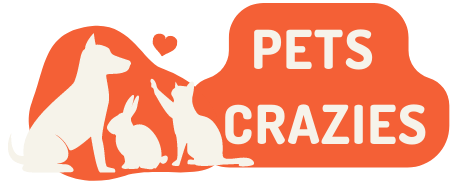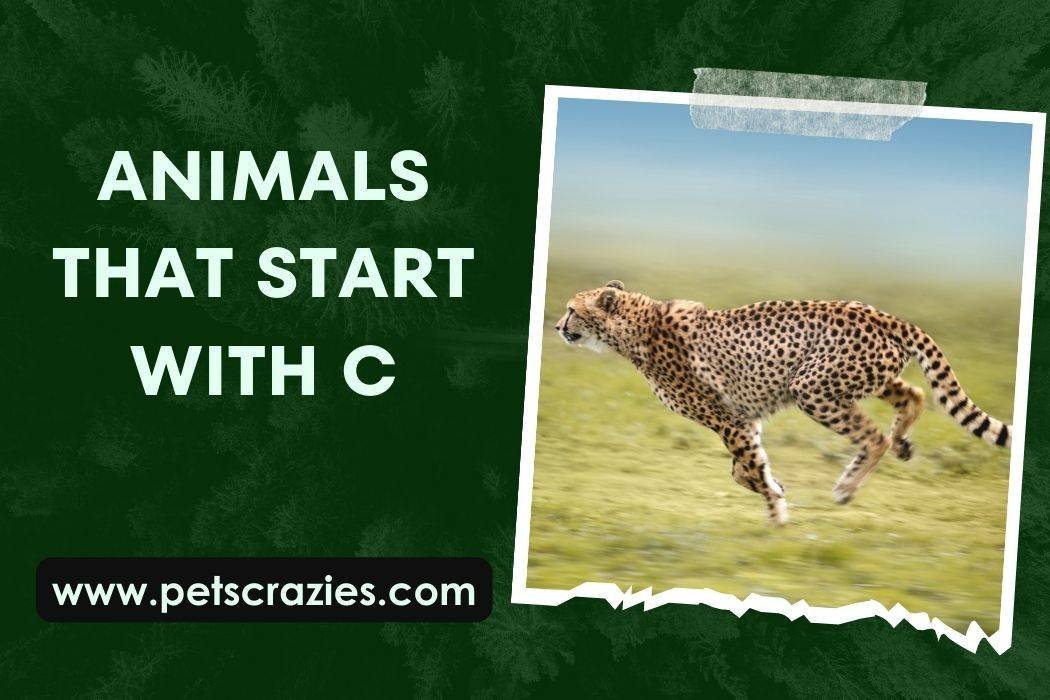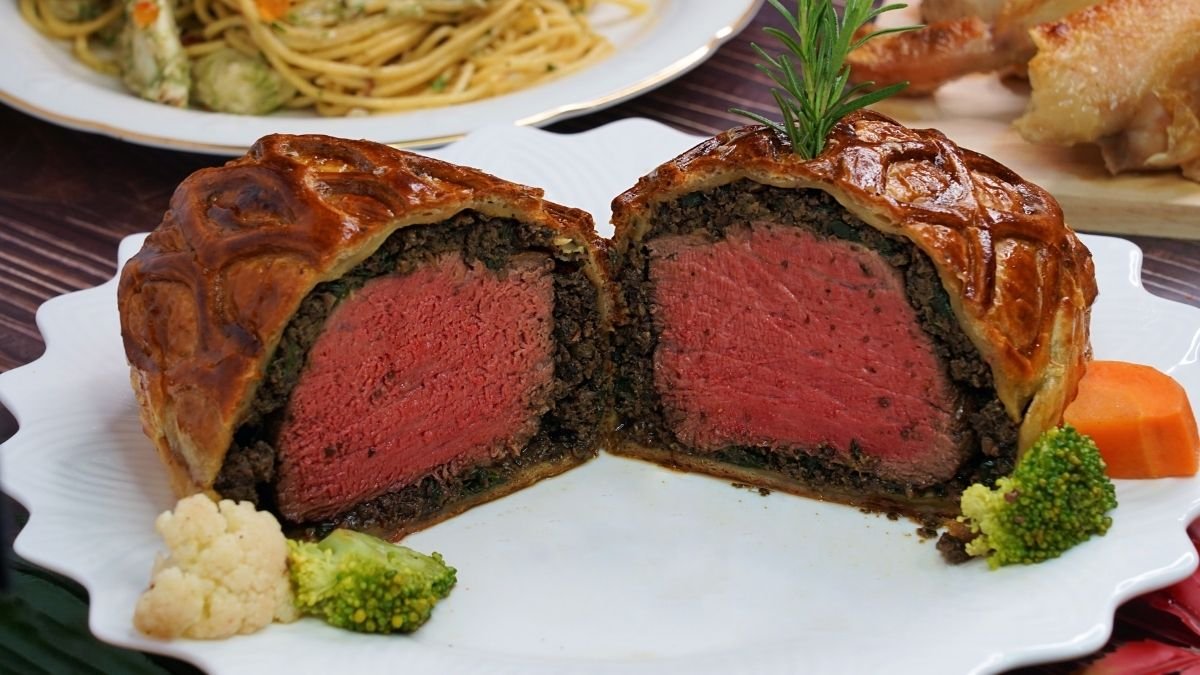Have you ever found yourself scratching your head, trying to think of animals that start with the letter ‘C’? It’s a surprisingly tricky task, isn’t it? From the majestic cheetah sprinting across the savannah to the humble caterpillar inching along a leaf, the animal kingdom is brimming with ‘C’ starters.
But why does this matter, you ask? Well, it’s not just a fun alphabet game. Knowing about these creatures opens a window into diverse habitats and behaviors.
List Of Animals That Start With C
- Cheetah
- Chimpanzee
- Capybara
- Camel
- Chameleon
- Clownfish
- Cobra
- Crocodile
- Coyote
- Caracal
- Cassowary
- Coati
- Cockatoo
- Cuttlefish
- Crane (bird)
- Chipmunk
- Caiman
- Coral Snake
- Coelacanth
- Collared Peccary
- Cuscus
- Cicada
- Cheetah
- Capuchin Monkey
- Coral
- Clam
- Cow
- Crow
- Cardinal (bird)
- Catfish
Animals That Start With C (Fun Facts & Species Details)
1. Cheetah

Fun Fact: The cheetah is the fastest land animal, capable of reaching speeds up to 75 mph in short bursts covering distances up to 1,500 feet.
| Detail | Information |
| Scientific Name | Acinonyx jubatus |
| Origin | Africa, Iran |
| Family | Felidae |
2. Chimpanzee

Fun Fact: Chimpanzees use tools more effectively than any other animal except humans, often using sticks to retrieve insects or leaves to soak up water.
| Detail | Information |
| Scientific Name | Pan troglodytes |
| Origin | Central and West Africa |
| Family | Hominidae |
3. Capybara

Fun Fact: Capybaras are the largest rodents in the world and can weigh up to 145 pounds.
| Detail | Information |
| Scientific Name | Hydrochoerus hydrochaeris |
| Origin | South America |
| Family | Caviidae |
4. Camel

Fun Fact: Camels have three sets of eyelids and two rows of eyelashes to keep sand out of their eyes.
| Detail | Information |
| Scientific Name | Camelus |
| Origin | Middle East, Central Asia |
| Family | Camelidae |
5. Chameleon

Fun Fact: Chameleons can move their eyes independently, allowing them to look in two different directions at the same time.
| Detail | Information |
| Scientific Name | Chamaeleonidae |
| Origin | Africa, Madagascar, Southern Europe, Asia |
| Family | Chamaeleonidae |
6. Clownfish

Fun Fact: Clownfish have a symbiotic relationship with sea anemones, where each protects the other from predators.
| Detail | Information |
| Scientific Name | Amphiprioninae |
| Origin | Indian and Pacific Oceans |
| Family | Pomacentridae |
7. Cobra

Fun Fact: Some species of cobras can “spit” their venom as a defense mechanism, aiming for the eyes of their threat.
| Detail | Information |
| Scientific Name | Naja |
| Origin | Africa, Asia |
| Family | Elapidae |
8. Crocodile

Fun Fact: Crocodiles have the strongest bite of any animal in the world, but their jaw muscles are so weak they can be held closed with just a rubber band.
| Detail | Information |
| Scientific Name | Crocodylidae |
| Origin | Africa, Asia, the Americas, Australia |
| Family | Crocodylidae |
9. Coyote

Fun Fact: Coyotes are very adaptable and have even been found living in urban areas.
| Detail | Information |
| Scientific Name | Canis latrans |
| Origin | North America |
| Family | Canidae |
10. Caracal

Fun Fact: The caracal is known for its remarkable jumping ability and can leap up to 12 feet in the air to catch birds.
| Detail | Information |
| Scientific Name | Caracal caracal |
| Origin | Africa, Middle East, Central Asia, India |
| Family | Felidae |
11. Cassowary
Fun Fact: Cassowaries are known for their powerful legs, which can kick with enough force to injure predators or even humans.
| Detail | Information |
| Scientific Name | Casuarius |
| Origin | New Guinea, Northeastern Australia |
| Family | Casuariidae |
12. Coati
Fun Fact: Coatis, also known as coatimundis, have highly flexible snouts that can rotate up to 60 degrees in any direction.
| Detail | Information |
| Scientific Name | Nasua |
| Origin | South and Central America, Southwestern North America |
| Family | Procyonidae |
13. Cockatoo
Fun Fact: Cockatoos are known for their intelligence and can learn to mimic human speech.
| Detail | Information |
| Scientific Name | Cacatuidae |
| Origin | Australia, Indonesia, Philippines |
| Family | Cacatuidae |
14. Cuttlefish
Fun Fact: Cuttlefish are masters of camouflage, able to change their skin color and texture in an instant to blend into their surroundings.
| Detail | Information |
| Scientific Name | Sepiida |
| Origin | Global in coastal waters |
| Family | Sepiidae |
15. Crane (bird)
Fun Fact: Cranes are known for their elaborate dances, which they use for courtship and to strengthen pair bonds.
| Detail | Information |
| Scientific Name | Gruidae |
| Origin | Worldwide, except South America and Antarctica |
| Family | Gruidae |
16. Chipmunk
Fun Fact: Chipmunks have cheek pouches that they use to store and transport food.
| Detail | Information |
| Scientific Name | Tamias |
| Origin | North America, Asia |
| Family | Sciuridae |
17. Caiman
Fun Fact: Caimans are smaller relatives of alligators and crocodiles, with some species growing only up to 5 feet in length.
| Detail | Information |
| Scientific Name | Caimaninae |
| Origin | Central and South America |
| Family | Alligatoridae |
18. Coral Snake
Fun Fact: Coral snakes are highly venomous, but they are shy and rarely bite unless provoked.
| Detail | Information |
| Scientific Name | Micrurus |
| Origin | Americas |
| Family | Elapidae |
19. Coelacanth
Fun Fact: Coelacanths were thought to be extinct until they were rediscovered in 1938 off the coast of South Africa.
| Detail | Information |
| Scientific Name | Latimeria |
| Origin | Indian Ocean, Indonesia |
| Family | Latimeriidae |
20. Collared Peccary
Fun Fact: Collared peccaries, also known as javelinas, have a strong scent gland on their back which they use for marking territory and identification.
| Detail | Information |
| Scientific Name | Pecari tajacu |
| Origin | North and South America |
| Family | Tayassuidae |
21. Cuscus
Fun Fact: Cuscuses are marsupials with a strong tail used for gripping branches, acting almost like a fifth limb.
| Detail | Information |
| Scientific Name | Spilocuscus |
| Origin | Australia, New Guinea |
| Family | Phalangeridae |
22. Cicada
Fun Fact: Cicadas are known for their loud calls. Some species can produce sounds louder than 100 decibels, equivalent to a chainsaw.
| Detail | Information |
| Scientific Name | Cicadidae |
| Origin | Worldwide, except Antarctica |
| Family | Cicadidae |
23. Cheetah
Fun Fact: Cheetahs are not only the fastest land animals but also have extraordinary acceleration, going from 0 to 60 mph in just a few seconds.
| Detail | Information |
| Scientific Name | Acinonyx jubatus |
| Origin | Africa, Iran |
| Family | Felidae |
24. Capuchin Monkey
Fun Fact: Capuchin monkeys are considered one of the most intelligent New World monkey species, known for their use of tools in the wild.
| Detail | Information |
| Scientific Name | Cebinae |
| Origin | Central and South America |
| Family | Cebidae |
25. Coral
Fun Fact: Corals are not plants but actually colonies of tiny animals called polyps, which can live for thousands of years.
| Detail | Information |
| Scientific Name | Anthozoa |
| Origin | Worldwide in marine environments |
| Family | Multiple families |
26. Clam
Fun Fact: Some species of clams can live for over 100 years, making them one of the longest-living invertebrates.
| Detail | Information |
| Scientific Name | Bivalvia |
| Origin | Worldwide in marine and freshwater habitats |
| Family | Multiple families |
27. Cow
Fun Fact: Cows have a nearly 360-degree panoramic vision, allowing them to see predators from all angles.
| Detail | Information |
| Scientific Name | Bos taurus |
| Origin | Domesticated worldwide |
| Family | Bovidae |
28. Crow
Fun Fact: Crows are highly intelligent birds, known for their problem-solving skills and ability to use tools.
| Detail | Information |
| Scientific Name | Corvus |
| Origin | Worldwide, except Antarctica |
| Family | Corvidae |
29. Cardinal (bird)
Fun Fact: Male cardinals are known for their bright red plumage and melodic songs, which they use to attract mates.
| Detail | Information |
| Scientific Name | Cardinalidae |
| Origin | North and South America |
| Family | Cardinalidae |
30. Catfish
Fun Fact: Catfish have taste buds all over their bodies, allowing them to taste and sense chemicals in the water, aiding in finding food.
| Detail | Information |
| Scientific Name | Siluriformes |
| Origin | Worldwide in freshwater and coastal marine waters |
| Family | Multiple families |





